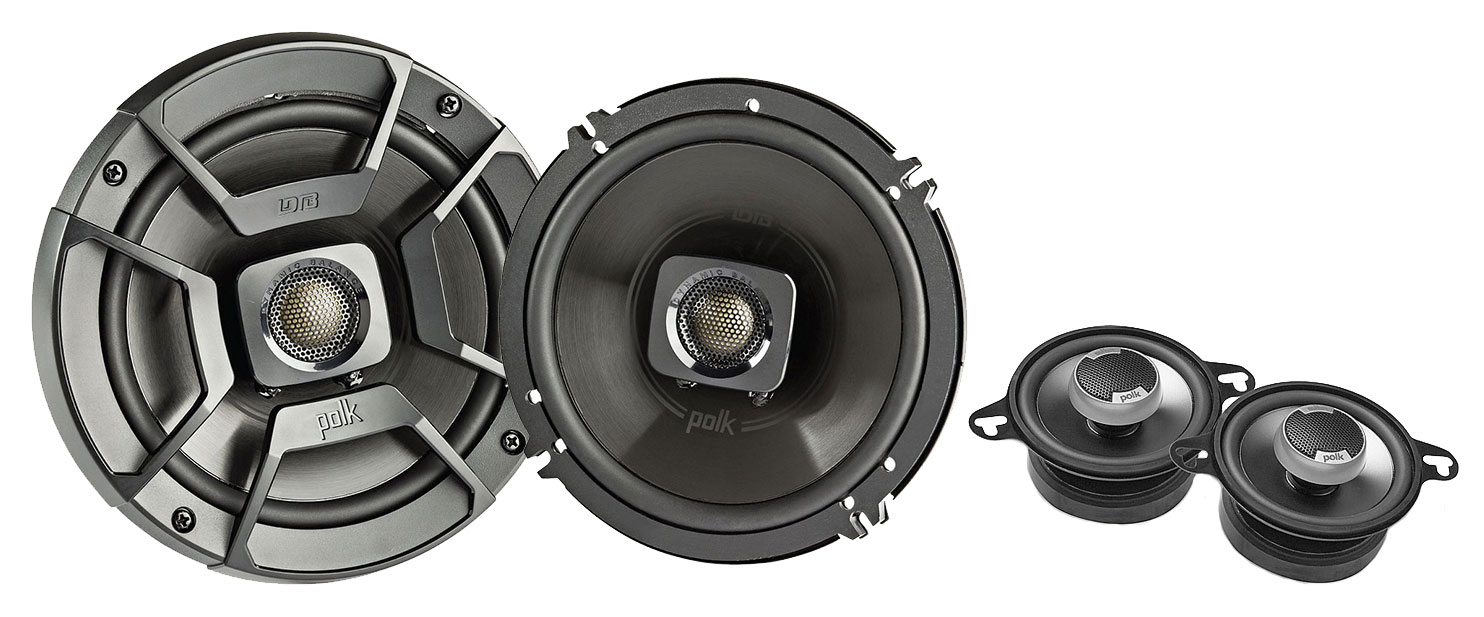You may be ready to upgrade your car’s speakers for a much-needed sound upgrade, but there are a few things you should know before making your selection. In our car speaker buying guide, we’ll cover selecting the right speaker size, the right type of speaker construction, materials, and more.
Related Post: Top 10 Car Essentials
Choosing the Right Speaker Size
The first step in upgrading your speakers is to select the right speaker size. If the speaker you choose is too large, you’ll have to return the store for an exchange. If it’s too small, you’ll need an adapter plate. You can find your car’s speaker size in your owner’s manual, or by using the Vehicle Fit Guide at Metra.

Types of Speakers
Car speakers come in two types: full-range and component.
Full-range speakers are all-in-one speakers. They have a woofer for lows and a tweeter for highs combined in one speaker. Some models also have additional drivers such as a midrange or supertweeter. Because everything is in one speaker, for most people they represent the easiest solution to replacing your factory speakers. Just remove the old speakers and install the new ones into the hole.

Component speakers have a separate woofer and tweeter for superior sound. Because it’s a separate unit, you can optimally position the tweeter for ideal sound imaging in your vehicle. Separate crossovers used in component speakers allow you to separate the frequencies for better sound reproduction.

Sensitivity
A speaker’s sensitivity determines how effectively the speaker converts power into sound. A higher efficiency rating means it is more efficient, which results in a louder speaker for the same amount of power. Factory radios, with their lower power outputs, benefit from speakers with high sensitivities. Aftermarket radios produce more power and can therefore use speakers with lower sensitivities.
Power Handling
Power handling refers to how much power a speaker can handle. You’ll want to refer to the RMS rating, which measures the continuous power a speaker can handle. Other ratings like peak power aren’t particularly useful when choosing speakers. If you’re keeping your factory head unit and only replacing your speakers, then you won’t benefit from high power speakers. On the other hand, if you will be using an aftermarket head unit and separate amplifier, high power speakers can take your sound system to the next level.
Speaker Material
The material your speakers are made of will impact the sound quality and feel. Woofers need to be made from stiff and lightweight materials to produce the best bass. Many woofers are made from polypropylene, but they’ll sound even better if they’re made of polypropylene mixed with other materials like mica. The best woofers are often woven fabrics coated with metal.

The material that connects the woofer to the speaker enclosure is the surround. The surround is flexible and is what allows the woofer to move to generate the sound. Foam and cloth are common surrounds, but the best performance and longevity can be had with rubber surrounds.

If you choose a tweeter with a soft material like a poly, textile blend, or silk you can expect refined highs. If you want your highs to be bright and snappy, stick to a hard material like metal, ceramic, or graphite.
Conclusion
When buying new speakers, first make sure they’re compatible by selecting the correct size for your vehicle, and selecting speakers with the proper sensitivity and power for your head unit or amplifier. Once you have an idea of your requirements, you can delve into the details of speaker materials.
Electronic Express professionally installs all car audio equipment, and our associates can answer any questions you may have about your audio system.
